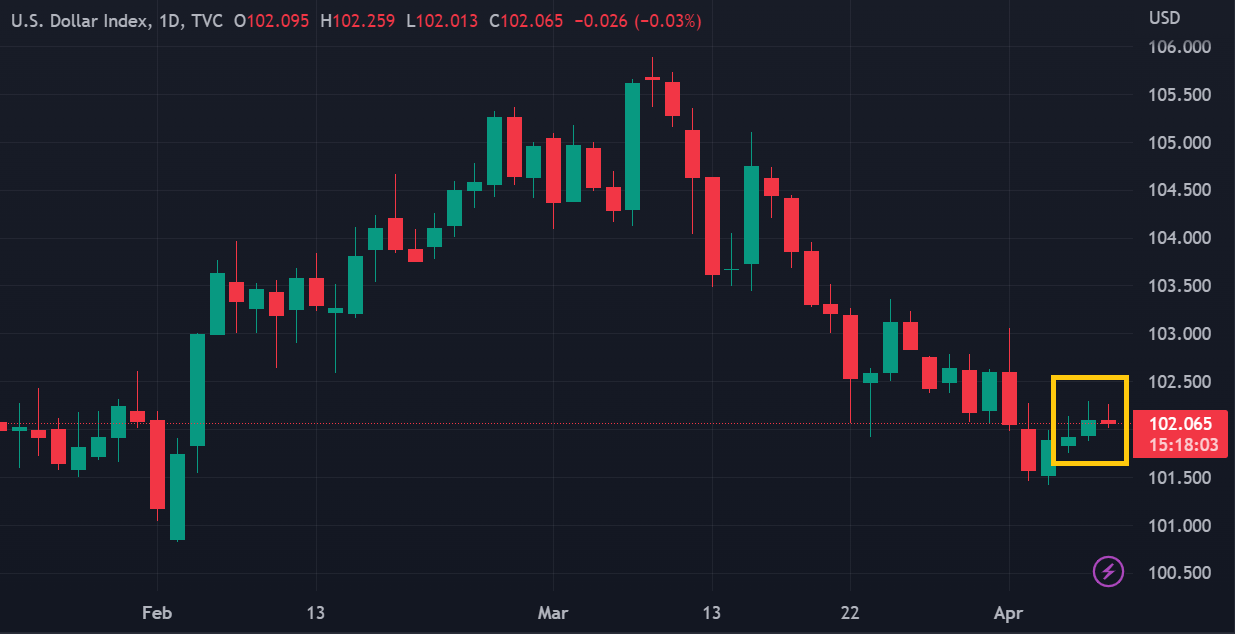The US dollar remains stable around 102.00, after a slight increase following the release of Nonfarm Payrolls data last week.
The forex market was relatively quiet at the beginning of this week, as some financial centers worldwide remained closed for Easter celebrations. The US dollar index (DXY) was stable around 102.00 at the end of the Asian session on Monday (April 10th), after a slight increase following the release of the Nonfarm Payrolls data last week. Major currency pairs also traded within a very narrow range.
 DXY Daily DXY Daily chart via TradingView
DXY Daily DXY Daily chart via TradingView
The US Department of Labor reported that Nonfarm Payrolls increased by 236k in March 2023, which slightly missed the consensus estimate of 239k. Meanwhile, the data for February was revised upward from 311k to 326k. These figures are not encouraging but are relatively better than the widespread weakness in some recent US PMI data.
Other US labor market data tend to be mixed without showing significant improvements or declines. The unemployment rate decreased from 3.6% to 3.5%, in line with the increase in the participation rate from 62.5% to 62.6%. Average hourly earnings growth increased by 0.3% (month-over-month), in line with market expectations.
Analysts believe that these data indicate that the Federal Reserve has an opportunity to raise interest rates by 25 basis points at next month's FOMC meeting. Meanwhile, the decline in annual average hourly earnings growth from 4.6% to 4.2% indicates that disinflation continues in the US labor market, thus limiting hawkish expectations.
"Federal Reserve officials are likely to continue delivering their higher-for-longer message in the run-up to the May policy meeting, supporting expectations for a final rate hike and putting a floor under the dollar," said Karl Schamotta, chief market strategist at Corpay in Toronto. "However, the latest data indicates that the economic risk backdrop is becoming increasingly negative -- if inflation and retail sales data disappoint in the coming weeks, the situation will be difficult to predict."

 Dedicated FREE FOREX VPS
Dedicated FREE FOREX VPS Free FOREX Virtual Private Server
Free FOREX Virtual Private Server MT4 Demo Contest, Get $500
MT4 Demo Contest, Get $500 Sign Up for an Account, Claim 60% Deposit Bonus
Sign Up for an Account, Claim 60% Deposit Bonus Free MT4/MT5 VPS 2024
Free MT4/MT5 VPS 2024 Send E-mail and Get Free Merchandise
Send E-mail and Get Free Merchandise $1K Refer a Friend Bonus for Pepperstone Pro clients
$1K Refer a Friend Bonus for Pepperstone Pro clients Maximize Your Earnings with 100% Deposit bonus
Maximize Your Earnings with 100% Deposit bonus Trade to Win, $5,000 Monthly Demo Contest
Trade to Win, $5,000 Monthly Demo Contest Claim 30% + 15% Deposit Bonus from LiteFinance
Claim 30% + 15% Deposit Bonus from LiteFinance






